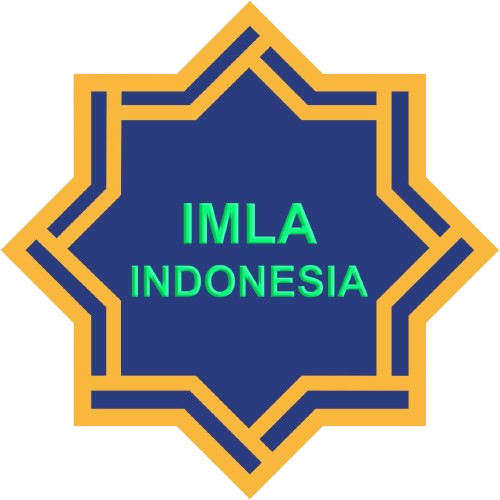Adaptation Patterns of the Berbers in Morocco and Algeria: Julian Steward's Cultural Ecological Perspectives
Abstract
The relationship between the environment and humans is not one-way. How humans adapt to their environment affects the culture and environment that will be formed in the region. Berber which is one of the largest ethnic groups in the Middle East, especially North Africa, has a unique and diverse pattern of adaptation. This paper focuses on research on the adaptation pattern of the Berbers in the two regions with the largest populations, namely Algeria and Morocco. Viewed from the perspective of Julian Steward's cultural ecology, the Berber tribe which is synonymous with nomadic and herding habits is a form of environmental adaptation in the Sahara desert, while trading and farming is a form of adaptation of the Berber tribes who live and settle in the Rifs mountains in Morocco and some hilly valleys such as Kabylie , Aures, and M'azb in Algeria. The results showed that herding, nomads, exploring water holes in the desert, navigating the stars, making tents and clothes from wool and sheepskin were the result of the adaptation of the Berbers to the environment they inhabited.
References
Brett, Michael. 2019. "Berbers". Encyclopedia Britannica, 20 Mar 2019. Accessed 13 December 2021. https://www.britannica.com/topic/Berber
Brown, Frank & Bellal Tahar. 2001. Comparative Analysis of M'zabite and Other Berber Domestic Spaces. Proceedings. 3rd International Space Syntax Symposium Atlanta 2001. United Kingdom: University of Manchester.
El Aissati, Abder Rahman. 2005. “A Socio-Historical Perspective On The Amazigh (Berber) Cultural Movement In North Africa”. Tilburg University. Africa Focus, Vol. 18, Nr. 1-2, 2005. Accessed 12 December 2021.
Fischer, Sarah. “Amazigh Legitimacy through Language in Morocco”. Human Rights & Human Welfare: An Online Journal of Academic Literature. Accessed December 13, 2021. https://www.du.edu/korbel/hrhw/researchdigest/mena/MiddleEast.pdf.
Forstag, Ben. 2008. “Barber Identity and the Crisis of Algerian Nationalism”. Journal of International Service Volume 18, Issue 1, Fall 2008 (AU-SIS). Accessed December 13, 2021.
Haenn, Nora & Richard Wilk (eds.). 2006. The Environment In Anthropology: A Reader In Ecology, Culture, And Sustainable Living. New York: New York University Press.
MacDonald, Peter. 2021. “Political Discourse in the Maghreb: An Analysis of Amazigh Identity in Algeria and Morocco”. FLUX: International Relations Review. Accessed 12 December 2021.
Mazas, A. Sanchez. 2000. The Berbers Of North Africa: Genetic Relationships According To Hla And Other Pol Ymorphisms. Geneva: Department of Anthropology, University of Geneva.
Redd, Wyatt. 2019. Meet The Berbers Of North Africa: The Nomads Who Survived Where No One Else Could. Accessed December 11, 2021. https://allthatsinteresting.com/berbers.
Saada, Asmaa & Djamel Dekoum. 2019. “Transformation of Berber Traditional Planning and Living Spaces”. Journal of Contemporary Urban Affairs 2019, Volume 3, Number 2, pages 28–34. Accessed December 13, 2021.
Copyright (c) 2022 Middle Eastern Culture & Religion Issues

This work is licensed under a Creative Commons Attribution-NonCommercial-ShareAlike 4.0 International License.
Middle Eastern Culture and Religion Issues (MECRI) applies the Creative Commons Attribution-NonCommercial-ShareAlike 4.0 International License, with the copyright on the published articles held by the journal. Authors are required to transmit the copyright to this journal once the articles are accepted. This journal is granted a non-exclusive license to publish the articles as the original publisher, along with the commercial right to publish printed issues for sale. Since this journal applies an open-access mode, authors may post articles published by this journal on personal websites or institutional repositories both prior to and after publication while providing bibliographic details that credit this journal.
By publishing with this journal, the copyright holder grants any third party the lawful right to use their published article to the extent provided by the Creative Commons Attribution-NonCommercial-ShareAlike 4.0 International license.
Subsequently, people are lawfully permitted to share, distribute, remix, adapt, and build upon the published articles for noncommercial purposes only, by providing appropriate credit or attribution (Title, Author, Source, and License of the work), including a link to the license, indicating if any changes were made, and redistribute the derivative outputs under the same license (CC BY-NC-SA 4.0).

















